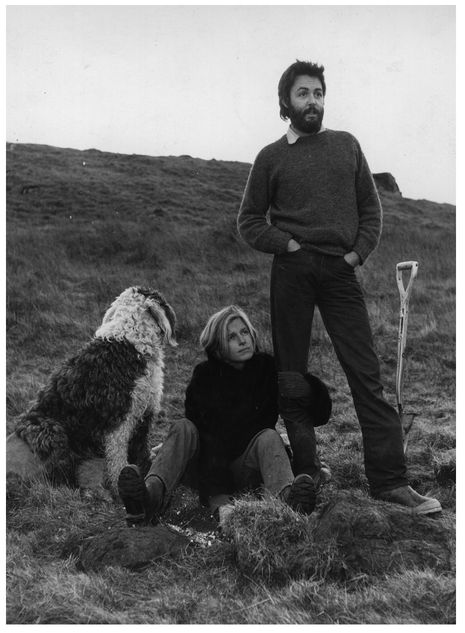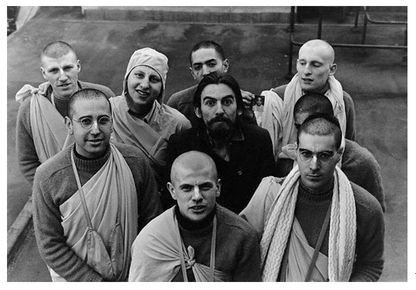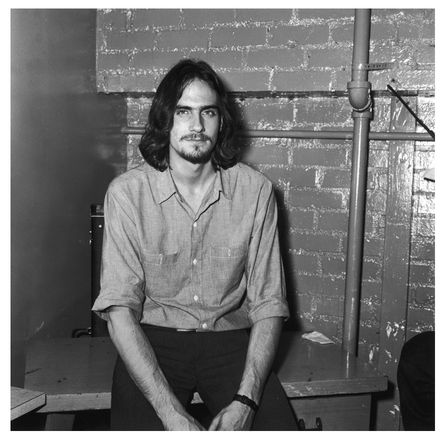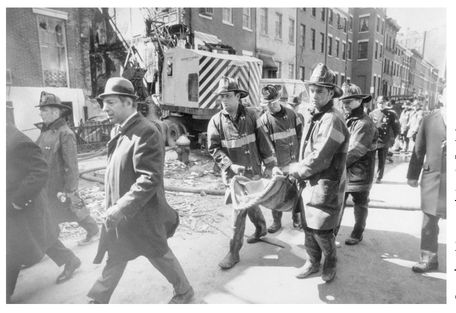Fire and Rain (27 page)
Authors: David Browne
The sun was breaking through the clouds and drenching the redwoods when the groceries arrived. Shortly after the band meeting in Los Angeles, Crosby and Young, whose bond was becoming especially unbreakable, left town for Northern California. After stopping at Crosby's home, they piled into Young's car, toked up. and took the drive to their road manager Leo Makota's home in Pescadero, south of San Francisco. Surrounded by trees, the house on that May 19 morning couldn't have been a more ideal retreat from the craziness of the L.A. scene and CSNY turmoil. Young was also having difficulties with his wife Susan, with whom he was living at their home in Topanga. “The falling-apart stuff always involved Stills,” Crosby said. “Neil and I stayed friends the whole time.”
The new issue of
Life
magazine, dated May 15, spilled out onto the breakfast table along with the food. “Tragedy at Kent,” announced the cover line, over a photo of students leaning over the body of another. The eleven pages that followed constituted the first, most extensive, and most unnerving look the public received of the shootings: gas-masked Guardsmen aiming to fire, a distraught girl kneeling beside Jeffrey
Miller's lifeless, jacketed body. Young looked away. He turned back and looked again. As Crosby watched, he walked over, grabbed a nearby guitar, and began writing a song. In fifteen minutes, out came an irate chant he simply called “Ohio“; Crosby worked on a harmony part while Young was writing.
Life
magazine, dated May 15, spilled out onto the breakfast table along with the food. “Tragedy at Kent,” announced the cover line, over a photo of students leaning over the body of another. The eleven pages that followed constituted the first, most extensive, and most unnerving look the public received of the shootings: gas-masked Guardsmen aiming to fire, a distraught girl kneeling beside Jeffrey
Miller's lifeless, jacketed body. Young looked away. He turned back and looked again. As Crosby watched, he walked over, grabbed a nearby guitar, and began writing a song. In fifteen minutes, out came an irate chant he simply called “Ohio“; Crosby worked on a harmony part while Young was writing.
Since Crosby and Young were due back in Los Angeles soon to begin rehearsals for the resuscitated tour, Crosby called Nash at home that night. Crosby rarely wavered in his role as the most excitable member the band, but this time he was noticeably charged. “You won't believe this fucking song Neil's written,” he told Nash, before ordering him to book time in the studio as soon as possible. The fact that Young had written a topical songâan extremely rare occurrence, especially next to Crosby's and Stills' workâwas doubly shocking. Business obligations were pulling them inexorably back together, but so were the times.
Luckily for them, a new drummer was already in hand. Another visitor to Makota's home during Crosby and Young's trip was Johnny Barbata, the lanky, shaggy-haired twenty-five-year-old former drummer for the Turtles. Makota knew Barbata socially; he was dating the sister of one of Barbata's friends. Hanging out with Crosby and Young, Barbata heard them discussing Taylor's firing, and soon enough Makota suggested Barbata step in. Since Barbata was a firm drummer who already knew most of the members of the band, the solution was easy and logical.
On May 20, the day after Young had written “Ohio,” he, Crosby, and Barbata were all back in Los Angeles, with orders to meet at a massive soundstage at the Warner Brothers studio lot to begin rehearsing with the new rhythm section of Barbata and Samuels. They'd be playing on the same stage where
They Shoot Horses, Don't They?
âa drama about a Prohibition-era dance rivalry in which contestants hoofed until they dropped, in some cases deadâhad been filmed the year before. The band found dark humor in the leftover sign from the production that
hung over the stage: “How Long Will They Last?” Tempting fate, they posed for pictures beneath it.
They Shoot Horses, Don't They?
âa drama about a Prohibition-era dance rivalry in which contestants hoofed until they dropped, in some cases deadâhad been filmed the year before. The band found dark humor in the leftover sign from the production that
hung over the stage: “How Long Will They Last?” Tempting fate, they posed for pictures beneath it.
Barbata knew he'd have to win over Stills, who was notoriously fussy about rhythm sections. He also well knew his and Samuels' rolesâlay low and take ordersâafter hearing about the troubles with Taylor and Reeves. “We already knew up front what our place was,” he said, “and that was fine with me.” As soon as he arrived, Barbata began throwing around a football with Stills, and overall, the drummer sensed a more relaxed vibe. “They seemed excited,” Barbata recalled. “They were insecure about the whole breakup and they wanted to get it right.” For all his bluster, Stills could be easily wounded and sensitive. On the plane from Chicago to Los Angeles after the Denver debacle, he appeared visibly shaken that his bandâthe one that had finally made him a star after so many years striving for that level of recognitionâcould be finished.
At the soundstage over the next few days, everyone worked hard to play nice. Diltz stopped by on the afternoon of May 21; as he snapped away, the band traded grins while rehearsing, and Stills and Young huddled together in conversation. Laura Nyro, the alternately earthy and flighty New York singer, songwriter, and pianist (and Geffen client), visited, and she, Crosby, Nash, and Stills gathered around a piano, harmonizing on her song “Eli's Coming.” The mood was convivial and nonconfrontational; the fact that Elliot Roberts was on the set, keeping a watchful eye on the proceedings, also helped.
That same night, Bill Halverson was at the Record Plant studio, setting up to resume work on Stills' album, when he received a call. The entire band, not just Stills, would be arriving shortly to record a new songâYoung's “Ohio.” (“Neil needed us
back
,” Stills cracked.) Although Halverson had been an eyewitness to tension in San Francisco six months before, the four men who strode into the Record Plant and set up in a crammed corner of the studio exuded a more unified front. Stills thought the song needed another verse and had conflicting thoughts
about the massacre. “I thought, there has to be more
to
this,” he recalled. “I'm sure a lot of the guys in that platoon were told they didn't have live rounds. Some part of me went, âGuys just don't
do
thatâthat's too much like the Germans. We're more honorable than firing into unarmed civilians.'”
back
,” Stills cracked.) Although Halverson had been an eyewitness to tension in San Francisco six months before, the four men who strode into the Record Plant and set up in a crammed corner of the studio exuded a more unified front. Stills thought the song needed another verse and had conflicting thoughts
about the massacre. “I thought, there has to be more
to
this,” he recalled. “I'm sure a lot of the guys in that platoon were told they didn't have live rounds. Some part of me went, âGuys just don't
do
thatâthat's too much like the Germans. We're more honorable than firing into unarmed civilians.'”

Paul and Linda McCartney contemplate life in semi-exile on their farm outside Campbeltown, Scotland, January 1970. (
Evening Standard
/Getty Images)
Evening Standard
/Getty Images)

Ringo and Maureen Starr at London's Heathrow Airport during the promotion for
The Magic Christian
that same month. (Popperfoto/ Getty Images)
The Magic Christian
that same month. (Popperfoto/ Getty Images)

George Harrison and assorted Hare Krishna friends, early March. (Hulton-Deutsch /Corbis)

James Taylor backstage at the Troubadour in Los Angeles, where he played regularly throughout 1970 as the cult for
Sweet Baby James
grew. (Max B. Miller/Getty Images)
Sweet Baby James
grew. (Max B. Miller/Getty Images)

New York City police cart away the remains of Weathermen member Diana Oughton, March 10, four days after the group's Greenwich Village brownstone (in background) exploded. (Bettmann/Corbis)

John Lennon, Yoko Ono, and their newly shorn hair, London, February 9, two days after introducing their revamped look to the world during a television interview. (AP Images)

Beatle fans gather outside Apple headquarters in London, April 10, after McCartney's surprise announcement hits the press. (AP Images)

Other books
Making Camp by Clare London
Vrin: Ten Mortal Gods by John Michael Hileman
Little Women (Barnes & Noble Classics Series) by Louisa May Alcott
Holding Up the Sky by Sandy Blackburn-Wright
Dark by Erin M. Leaf
Facelift by Leanna Ellis
Something Deadly This Way Comes by Kim Harrison
Louise Rennison_Georgia Nicolson 03 by Knocked Out by My Nunga-Nungas
Sinful Temptation by Christopher, Ann